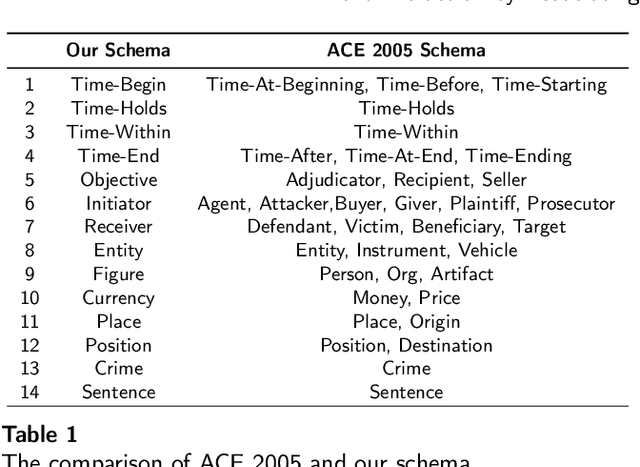Xiaohan Dong
Event Extraction by Associating Event Types and Argument Roles
Aug 23, 2021



Abstract:Event extraction (EE), which acquires structural event knowledge from texts, can be divided into two sub-tasks: event type classification and element extraction (namely identifying triggers and arguments under different role patterns). As different event types always own distinct extraction schemas (i.e., role patterns), previous work on EE usually follows an isolated learning paradigm, performing element extraction independently for different event types. It ignores meaningful associations among event types and argument roles, leading to relatively poor performance for less frequent types/roles. This paper proposes a novel neural association framework for the EE task. Given a document, it first performs type classification via constructing a document-level graph to associate sentence nodes of different types, and adopting a graph attention network to learn sentence embeddings. Then, element extraction is achieved by building a universal schema of argument roles, with a parameter inheritance mechanism to enhance role preference for extracted elements. As such, our model takes into account type and role associations during EE, enabling implicit information sharing among them. Experimental results show that our approach consistently outperforms most state-of-the-art EE methods in both sub-tasks. Particularly, for types/roles with less training data, the performance is superior to the existing methods.
 Add to Chrome
Add to Chrome Add to Firefox
Add to Firefox Add to Edge
Add to Edge